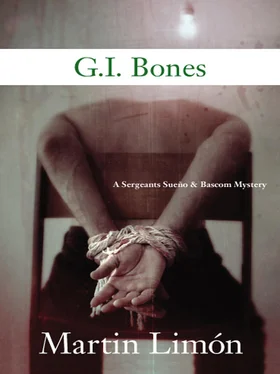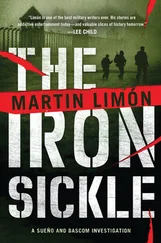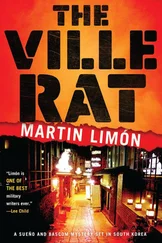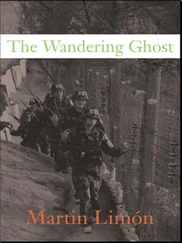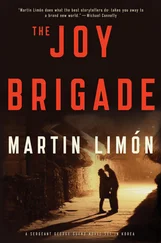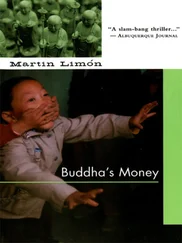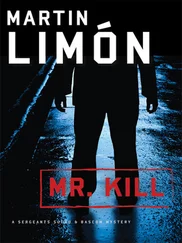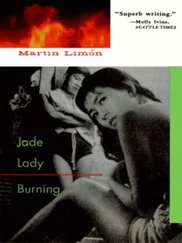Martin Limon - G. I. Bones
Здесь есть возможность читать онлайн «Martin Limon - G. I. Bones» весь текст электронной книги совершенно бесплатно (целиком полную версию без сокращений). В некоторых случаях можно слушать аудио, скачать через торрент в формате fb2 и присутствует краткое содержание. Жанр: Полицейский детектив, на английском языке. Описание произведения, (предисловие) а так же отзывы посетителей доступны на портале библиотеки ЛибКат.
- Название:G. I. Bones
- Автор:
- Жанр:
- Год:неизвестен
- ISBN:нет данных
- Рейтинг книги:4 / 5. Голосов: 1
-
Избранное:Добавить в избранное
- Отзывы:
-
Ваша оценка:
- 80
- 1
- 2
- 3
- 4
- 5
G. I. Bones: краткое содержание, описание и аннотация
Предлагаем к чтению аннотацию, описание, краткое содержание или предисловие (зависит от того, что написал сам автор книги «G. I. Bones»). Если вы не нашли необходимую информацию о книге — напишите в комментариях, мы постараемся отыскать её.
G. I. Bones — читать онлайн бесплатно полную книгу (весь текст) целиком
Ниже представлен текст книги, разбитый по страницам. Система сохранения места последней прочитанной страницы, позволяет с удобством читать онлайн бесплатно книгу «G. I. Bones», без необходимости каждый раз заново искать на чём Вы остановились. Поставьте закладку, и сможете в любой момент перейти на страницу, на которой закончили чтение.
Интервал:
Закладка:
We cruised into its cold depths.
Ernie and I must have been the only Miguks to enter the big cement block building of Seoul City Hall in quite a while judging by the stares we received. None of the signs were in English and some of the Korean was beyond my capacity so I ended up stopping men in suits carrying briefcases and asking them tomfool questions. Since I didn’t know the technical jargon, I described what I needed in broad terms. Cute young secretaries stared at Ernie and me as if we were animals escaped from the zoo. Ernie grows antsy in these situations and I was worried he’d do something ill-considered. After we were directed to the third wrong office in a row, a kindly elderly woman finally directed us to what I later found out was the Office of Building Plans for the Southern Districts of Seoul.
The original plans to the seven buildings Moretti had built were still on file. Not blueprints. Nobody had time for something so time consuming after the war. Buildings had to be built and they had to be built now. Most of the plans were nothing more, really, than glorified sketches done on pulp paper with pencil and ruler, notations in Korean and English made in the margins. Then, after a number of erasures, the broad outlines of the structure had been recopied, right over the pencil lines, in blue ink.
I paid for photocopies to be made of each set of plans. I counted out the won and the grim-faced clerk handed me the plans in a brown envelope along with a receipt. Ernie and I walked back out into the broad hallway.
“What are you going to do with these things?” Ernie asked.
“Some comparison shopping.”
“You really are nuts, Sueno.”
Across the street from city hall, we found a teahouse with waitresses wearing blue uniforms and white gloves. Ernie convinced one of the girls to slip off her gloves and started fondling her fingers, all the while-supposedly-teaching her how to count in English. While the waitresses giggled, I sipped on ginseng tea and studied the plans, comparing them to what I’d seen in Itaewon last night.
There had been a lot of changes made since the buildings were originally erected. Rooms added, walls torn down, electrical wiring installed. And, of course, the Yobo Club had been completely demolished and replaced by a brand new structure, not a nightclub but a shopping emporium: trinkets, T-shirts, sporting equipment.
After the Itaewon Massacre, the ROK Army and the Korean National Police had clamped down on the entire area. For the better part of a month, Itaewon had been put off-limits to all civilians. The only people allowed to enter were those who could prove, by the address on their national identity card, that they were residents. All vehicles leaving the village were searched, either by the ROK Army at roadblocks or by the KNPs. Cort searched Itaewon himself, assisted by two armed MPs. They concentrated on the bars and brothels controlled by the Seven Dragons and any places likely to hide a corpse, including icehouses and electrical refrigeration units. They came up with nothing.
The Han River was about two miles away but the KNP roadblocks had been slapped on so fast after the fight that it was unlikely the killers could have made it out of there in time to dump the body. And even if they had, the corpse probably would’ve been spotted when it rose to the surface a few miles downstream near the Han River Estuary.
Of course, the Seven Dragons could’ve buried Moretti’s body in an empty field. But the southern edge of Seoul-and, indeed, the entire city-was so crammed with refugees after the war that there weren’t any empty fields to be found. Squatters were everywhere. Someone would’ve spotted men burying a corpse. The squatters would have been afraid to report it to the KNPs. Still, rumors would’ve spread. Someone would’ve heard something. And no such rumor had ever come to light.
Maybe the Seven Dragons had chopped up Moretti’s body and disposed of it. This was a possibility so grim I didn’t like to think about it. As vicious as the Seven Dragons were, they had never been known to resort to anything quite so macabre, according to Cort. The Seven Dragons would have been subject to the same superstitions as other Koreans and chopping up someone’s body is the perfect way to insure that their spirit will come back to haunt you.
In fact, when no sign of Moretti’s corpse surfaced, Investigator Cort started to suspect-or maybe hope-that Technical Sergeant Flo Moretti was still alive.
5
That night, Ernie and I caught a kimchee cab out to the ville and then entered into the den of iniquity known as the King Club. We were wearing our running-the-ville outfits: blue jeans, sneakers, sports shirts and nylon jackets with fire-breathing dragons embroidered on the back. In other words, we looked like two typical G.I. s out to spend a mindless evening of drinking beer and playing pinch-butt with as many Korean business girls as we could get our hands on.
During the duty day, Ernie and I are required to wear a white shirt with a tie and a sports jacket. Not uniforms. That getup, coupled with our short haircuts, fairly screams that the two guys you’re looking at are 8th Army CID agents. But that’s the military mind. They want us in civilian clothes in order to blend in with the civilian population but they don’t want us wearing the clothes that civilians actually wear.
At least now, after work, we could dress like two regular G.I. s. Not that we were fooling many people. Itaewon is a small village and most everybody knew who we were.
Miss Kwon hadn’t arrived at work yet and the all-Korean rock-and-roll band on the stage was still tuning up so I started talking to the middle-aged woman behind the bar, Mrs. Bei. She managed the place for the real owner.
“Who’s the G.I. who complained about Miss Kwon?” I asked.
Mrs. Bei frowned. She didn’t know his name. She only knew that he was a black man, that he wasn’t a youngster, and then she held her splayed fingers at the side of her head to show me that his hair stuck out farther than army regulation allowed.
There are over 1,500 American G.I. s stationed at 8th Army headquarters on Yongsan Compound. After you’ve been here awhile, and especially when you’re in my line of work, you get to know quite a few of them. In fact, 8th Army is much like a small town, full of gossip and backbiting, and everyone knows all about everyone else‘s business.
Back at my barstool, I told Ernie what Mrs. Bei had said.
Without hesitating, Ernie said, “Hilliard.”
He was referring to Sergeant First Class Quinton A. Hilliard, the NCO-in-charge of the 8th Army EEO Office. Equal Employment Opportunity.
I agreed. It sounded like Hilliard.
After the “race riot” in Itaewon in 1972, the 8th Army honchos finally acquiesced to setting up what other government agencies already had: a staff to monitor race relations within the command. Prior to 1972, Itaewon had been segregated. White soldiers, and other “honorary” whites like Chicanos and Asians, frequented the red-light village of Itaewon. The black soldiers had their own smaller ville on the other side of Yongsan Compound, in a district of Seoul called Samgakji. Samgakji is still there, and still thriving, but now black soldiers can venture into Itaewon without fear of reprisal, for the most part. However, when Ernie and I had occasionally gone to Samgakji on an investigation, we’d never once seen a white G.I.
Ernie and I ordered beers and sat through the rock band’s first set. After a half hour, when the club was almost full, Miss Kwon still hadn’t shown up. We decided to look for her. I asked around amongst the business girls and received directions to her hooch which was, as I suspected, located in the maze of dark alleys behind the nightclub district. We pushed through the double doors of the King Club and stepped out into the street. After some searching through narrow pedestrian lanes and knocking on doors, we found the hooch the King Club business girls had described. It was a three-story building behind a high brick wall.
Читать дальшеИнтервал:
Закладка:
Похожие книги на «G. I. Bones»
Представляем Вашему вниманию похожие книги на «G. I. Bones» списком для выбора. Мы отобрали схожую по названию и смыслу литературу в надежде предоставить читателям больше вариантов отыскать новые, интересные, ещё непрочитанные произведения.
Обсуждение, отзывы о книге «G. I. Bones» и просто собственные мнения читателей. Оставьте ваши комментарии, напишите, что Вы думаете о произведении, его смысле или главных героях. Укажите что конкретно понравилось, а что нет, и почему Вы так считаете.
